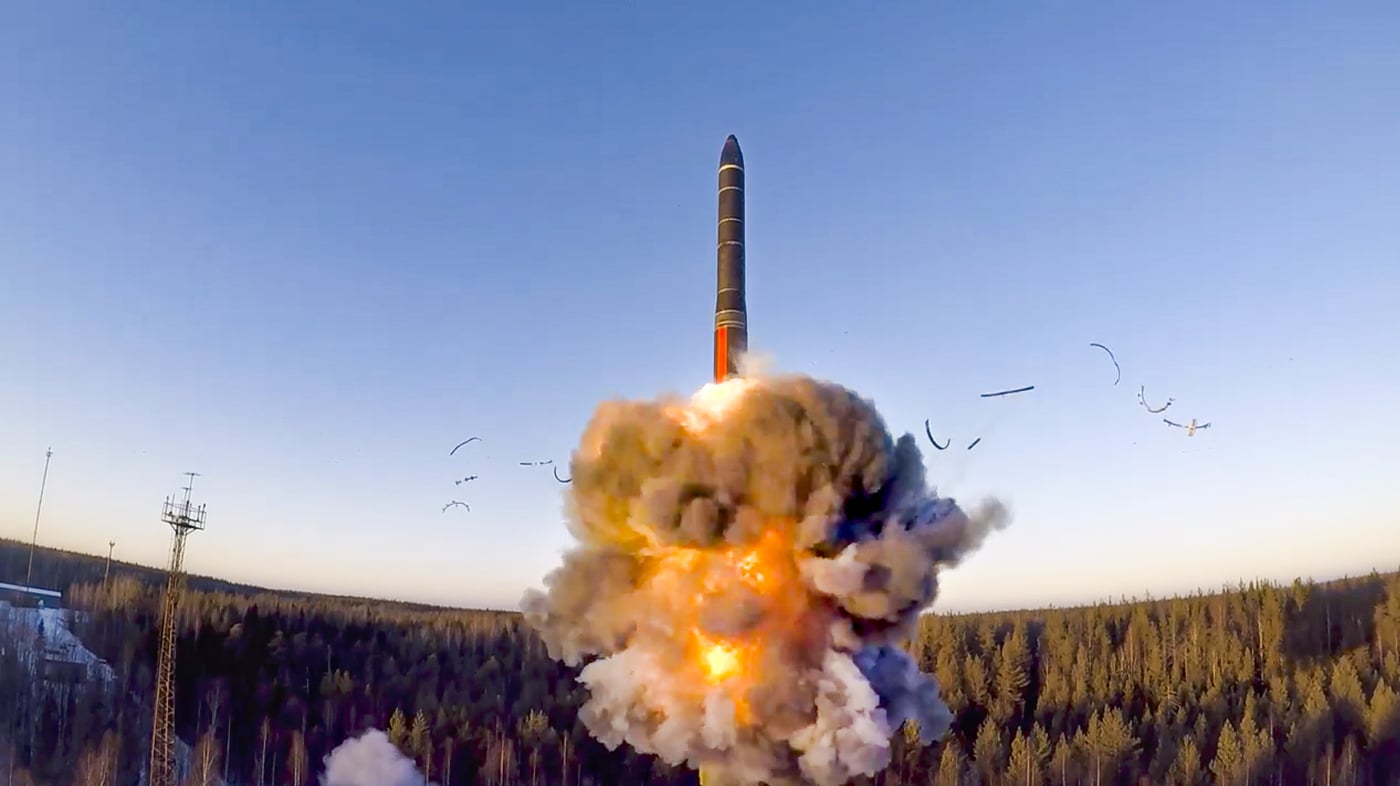Concerns of nuclear war linger as conflict in Ukraine continues
President Vladimir Putin threatens nuclear retaliation in the event of Ukrainian advances.
Tensions between Russia and the West are at an all-time high, as concerns of nuclear conflict continue. In February, President Vladimir Putin placed Russian nuclear deterrence forces at “special combat readiness.” On September 21, he warned Ukraine and its allies in the West of nuclear retaliation if the state, including the recently annexed regions of Ukraine, is threatened.
The Russian military deployment principles allow for the use of nuclear intervention if weapons of mass destruction—biological, chemical, or nuclear—are used against the state, or if a significant danger threatens the security of Russia.
On October 24, the Russian Defence Ministry accused Ukraine of creating dirty bombs—explosives that contain radioactive substances, such as uranium, sourced from laboratories, hospitals, or nuclear power plants—with the intention of provoking further escalation of the conflict.. As dirty bombs do not necessarily use refined radioactive substance, it is often easier and faster to produce them compared to traditional nuclear weapons. The bombs can be transported using vehicles—they do not require missiles to carry them—and once detonated, can cause radioactive contamination in a large area around the epicentre, depending on the type of explosives used.
Igor Kirilov, chief of Russia’s Radiation, Chemical and Biological Protection Forces, stated that “The purpose of this provocation is to accuse Russia of using weapons of mass destruction in the Ukrainian theatre of operations.”
This claim has raised concerns that Putin is establishing the necessary pretext for the use of nuclear weapons.
Experts argue that it is unlikely that the conflict will devolve into a nuclear war, suggesting that the risks outweigh the gains, as the human and diplomatic costs to Russia would be too great, and would undoubtedly force NATO’s direct intervention. Nevertheless, experts acknowledge that Russia may be more likely to use tactical nuclear weapons in Ukraine to break stalemates or avoid defeat.
Tactical nuclear weapons are small warheads—explosives that must be carried by delivery systems like missiles—designed for limited strikes to destroy specific targets with reduced radioactive fallout and explosive power. However, tactical nuclear weapons can range between less than one kiloton to over a hundred kilotons. In comparison, Little Boy—the nuclear bomb dropped on Hiroshima in 1945—exploded with the energy of 15 kilotons.
US intelligence estimates that Russia possesses around 2,000 nuclear warheads. Although, if Russia proceeds to deploy tactical nuclear weapons in Ukraine, full scale nuclear conflict would not be ensured. While the US is prepared for the use of nuclear weapons in Ukraine, the general aversion to using tactical nuclear weapons displayed by the US in the past suggests that retaliation of the same scale is unlikely.
Nations across the world acknowledge the potential outbreak of nuclear warfare, but bureaucratic and diplomatic solutions remain the prime focus in deescalating the Russo-Ukrainian War.
Staff Writer (Volume 48) — Kiara is in her third year, completing a History and Political Science Specialist. When she's not writing essays or stressing about deadlines, she enjoys keeping up with global conflicts, watching clips of British panel shows, playing Valorant, and buying books she fully intends to but never manages to read.

